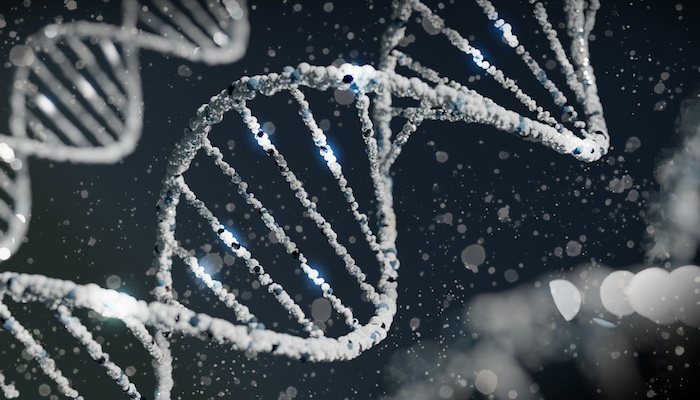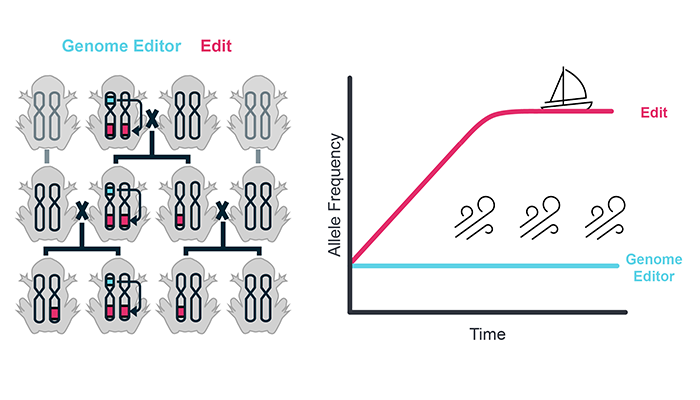Macquarie University and CalTech researchers have developed a new genetic editing technique called Allele Sail which could improve the acceptability of genetic modifications, by allowing subtle modifications to spread through wild populations without persistent foreign DNA.
 New genetic editing technique to alter the traits and fates of wild populations
New genetic editing technique to alter the traits and fates of wild populations
A new technique developed by researchers from Macquarie University and the California Institute of Technology described in Nature Communications on 13 August could allow scientists to more simply and controllably alter the genetic makeup of wild populations than with the use of gene-drives.
The technique, called an Allele Sail, uses genome editing technologies (such as CRISPR and Cas9) to introduce a variety of potential genetic changes into wild populations without having to spread the genome editor transgene to high frequencies.
“Allele Sails offer a simple way to alter the traits and fates of wild populations, and may be more acceptable to use as the genetically modified part is introduced at low frequencies, and its persistence can be tuned,” says lead author Michelle Johnson, a computational biologist from CalTech.

A force for change
Professor Bruce Hay from CalTech’s Division of Biology and Biological Engineering co-led the study with Dr Maciej Maselko from Applied Biosciences at Macquarie University.
“Allele Sails operate using simple molecular mechanisms and should function efficiently in a much wider range of species than other population modification approaches, such as gene-drives,” says Professor Hay.
The fundamental idea is to first engineer transgenic organisms to express genome editors and those editors make changes at targeted locations in the genome which are both viable and fertile. These organisms would be released to reproduce with their wild counterparts.
When offspring inherit one copy of the editor and one copy of an unmodified version of the target, the editor makes the desired change. The result are organisms with two copies of the modified target, but still only one copy of the editor. Thus, there is an amplification of the edit but not the editor, which remains at a low frequency.
“In Allele Sails, the editor transgene acts like a force to push subtle modifications into a population as opposed to transgene-bearing gene-drives which act autonomously to increase their own frequency,” says Dr Maselko.
The research, supported by a grant from the CalTech Center for Evolutionary Sciences, presents results from sophisticated population models to explore various Allele Sail scenarios and critical parameters, such as if the editor or the edits are both under negative selection, or if Allele Sails could efficiently suppress pest populations by targeting genes that would result in fewer females.

An ocean of possibilities
The team envisions a variety of applications for Allele Sails to address major global challenges. Examples include editing coral for heat tolerance, restoring lost genetic variation critical for disease resistance in threatened species, impairing mosquitoes’ ability to transmit pathogens, reversing pesticide resistance in rodents, and making the invasive cane toad less toxic.
These types of traits can often be introduced with very minor edits. Just a single letter nucleic acid difference is sufficient in many cases.
“Allele Sails could be most adept at spreading small changes that are indistinguishable from natural mutations,” says Mr Johnson.
The authors also hope that introducing changes that are indistinguishable from those that can naturally occur while using a transgene that is present in small quantities and does not persist indefinitely would ease public concerns and regulatory hurdles associated with alternative, gene-drive, approaches.
“Of course, any genetic modification of wild populations will need careful study of potential environmental impacts, but Allele Sails could be an important option in situations where conventional conservation and pest management tools have not been enough on their own,” says Dr Maselko.
Φ